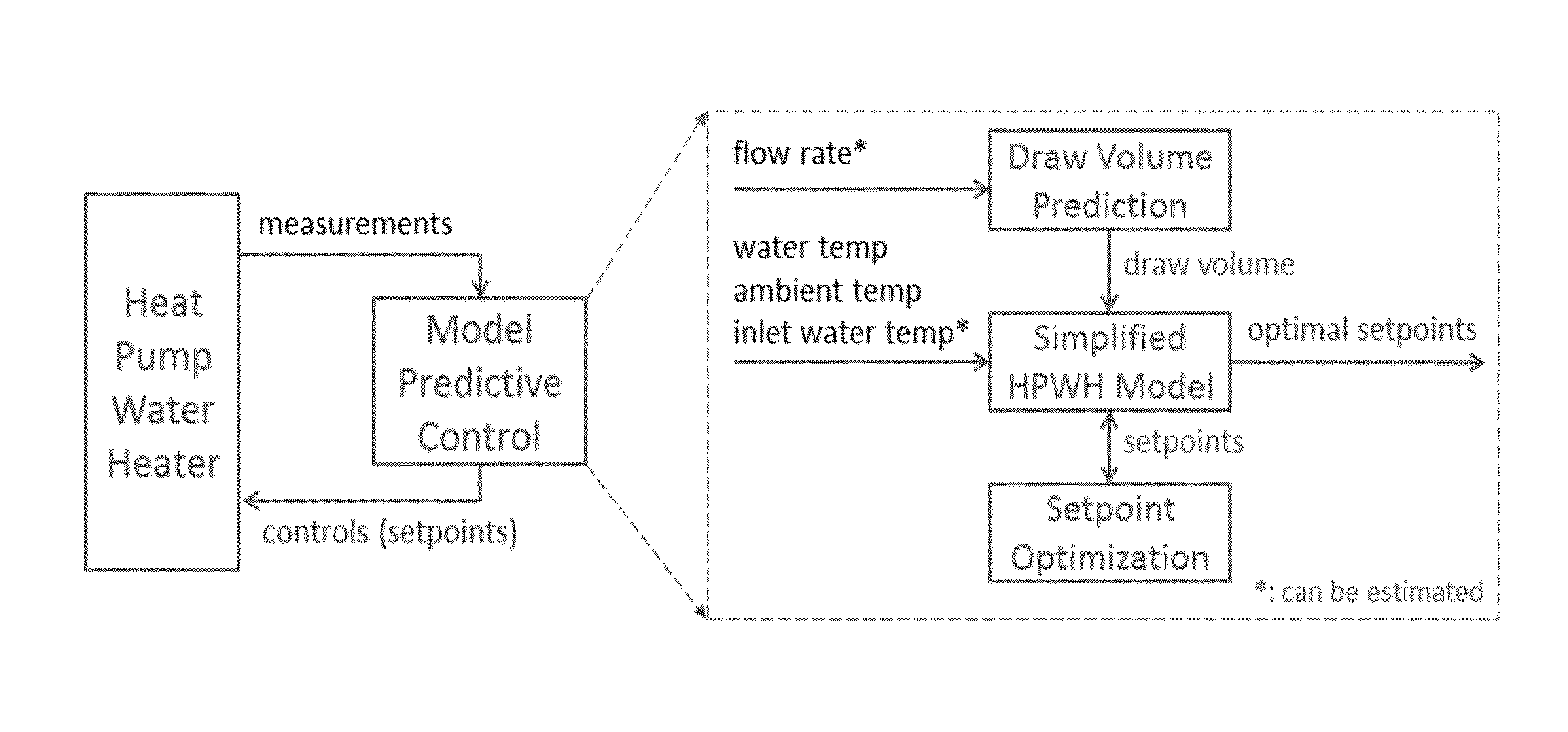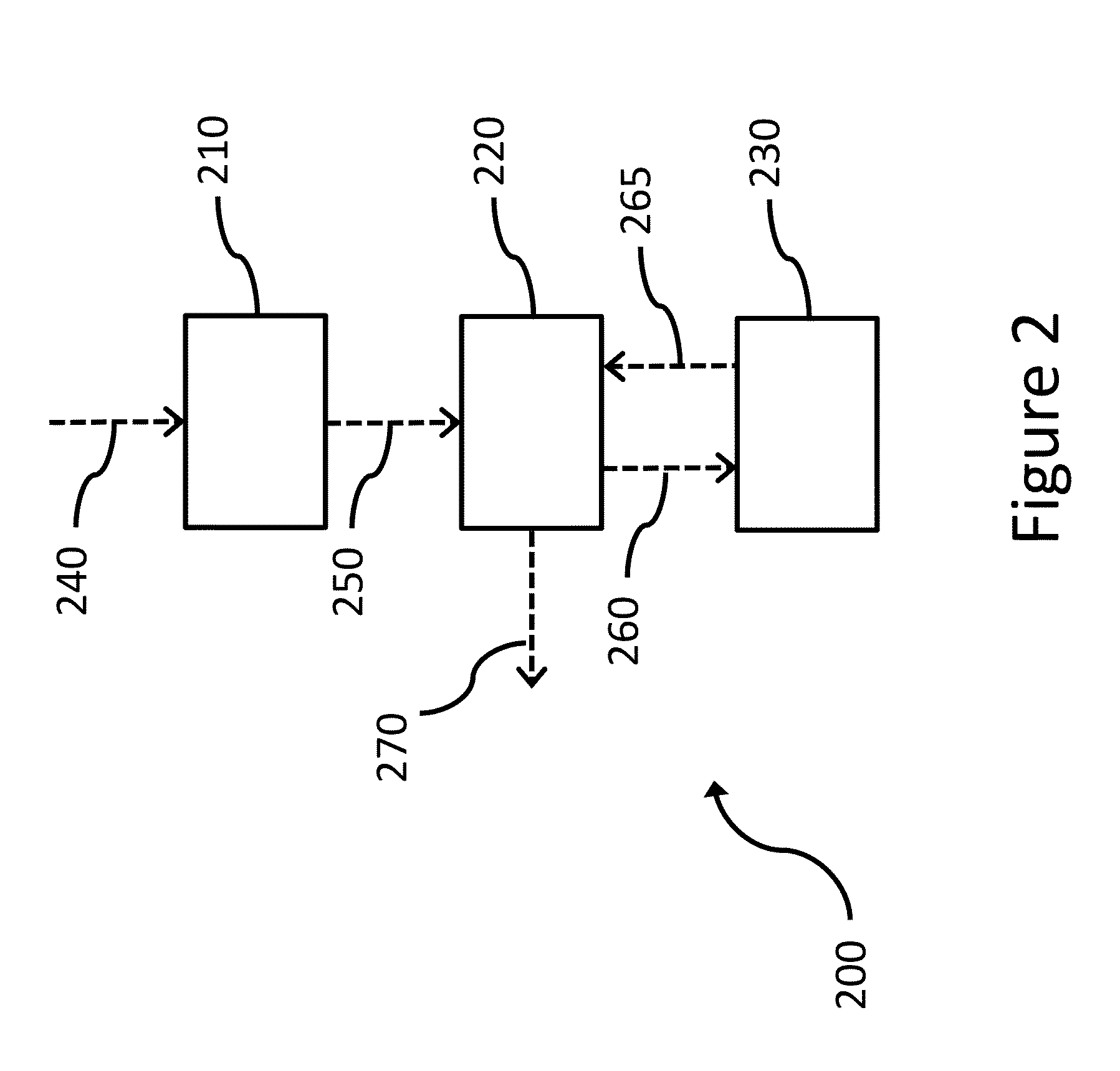Model predictive control for heat transfer to fluids
a technology of heat transfer and model, applied in the direction of heat pumps, heating types, domestic cooling devices, etc., can solve the problems of increasing the total energy consumption of households in the united states, and achieve the effect of reducing the input energy required
- Summary
- Abstract
- Description
- Claims
- Application Information
AI Technical Summary
Benefits of technology
Problems solved by technology
Method used
Image
Examples
example 1
[0068]Heat pump water heaters (HPWH) in the United States typically feature both a heat pump and at least one electric resistance element for heating. The heat pump is much more efficient than the element but cannot heat the water as quickly. The combination of these two heat sources makes HPWH a candidate for implementing advanced control methods to achieve additional energy savings. This example describes an embodiment of the present invention where predictive control methods provide optimal set-point profiles for both heating elements based on the patterns discovered from users' hot water usage data. A simulation study presented herein indicate these predictive control methods are able to achieve significant energy savings without impacting users' thermal comfort.
[0069]Unlike traditional control methods, this example provides a prediction module, which estimates the hot water draw volume in the near future based on historical draw profiles. Flow rate and time of use information a...
example 2
[0088]This example summarizes experiments focused on comparing simulation results to actual laboratory data of a model predictive controller's performance, as well as the performance of MPC for HPWH embodiments of the present invention as described herein to standard methods for controlling HPWH.
[0089]A first set of experiments compared actual lab data of an MPC controlled HPWH to simulation data of a MPC controlled HPWH. The laboratory tests were completed using a GeoSpring HPWH from GE. This unit contained a heat pump and two electric heating elements. One element was located near the top of the tank and the other was located near the bottom. Nominal design specifications for a GeoSpring HPWH are tabulated below.
TABLE 6GeoSpring HPWHTable 1: HPWH nominal parametersVolume50galLower Element Power4.5kWUpper Element Power4.5kWCompressor Power700W
[0090]The GeoSpring water heater was outfitted with various sensors to monitor performance (more on this below). To implement embodiments of ...
PUM
 Login to View More
Login to View More Abstract
Description
Claims
Application Information
 Login to View More
Login to View More - R&D
- Intellectual Property
- Life Sciences
- Materials
- Tech Scout
- Unparalleled Data Quality
- Higher Quality Content
- 60% Fewer Hallucinations
Browse by: Latest US Patents, China's latest patents, Technical Efficacy Thesaurus, Application Domain, Technology Topic, Popular Technical Reports.
© 2025 PatSnap. All rights reserved.Legal|Privacy policy|Modern Slavery Act Transparency Statement|Sitemap|About US| Contact US: help@patsnap.com



